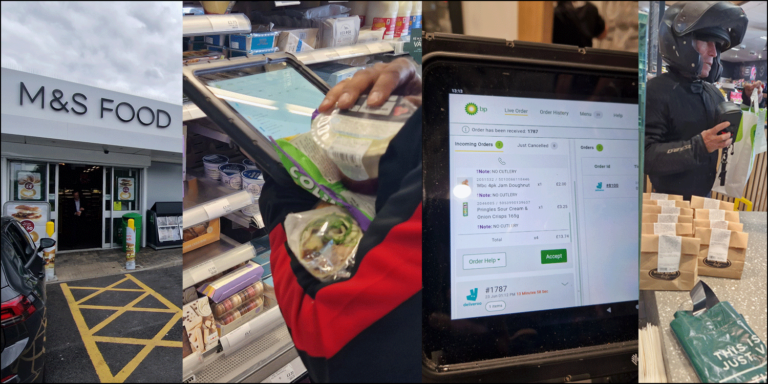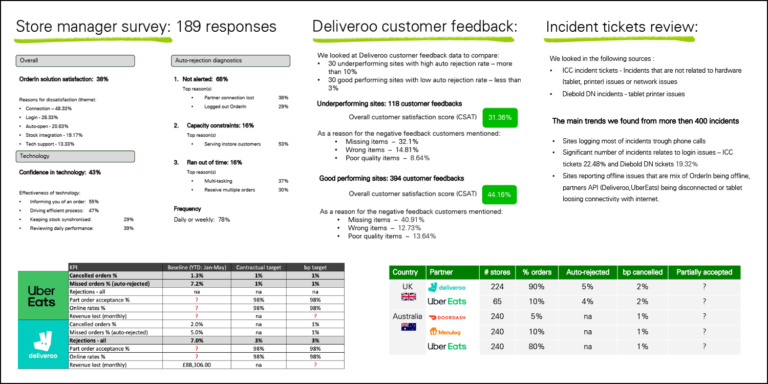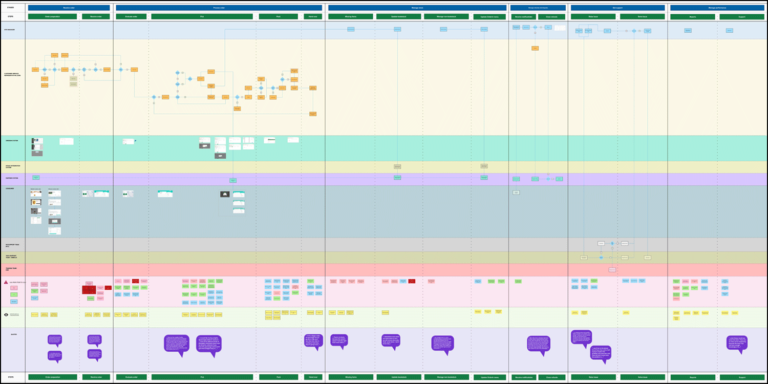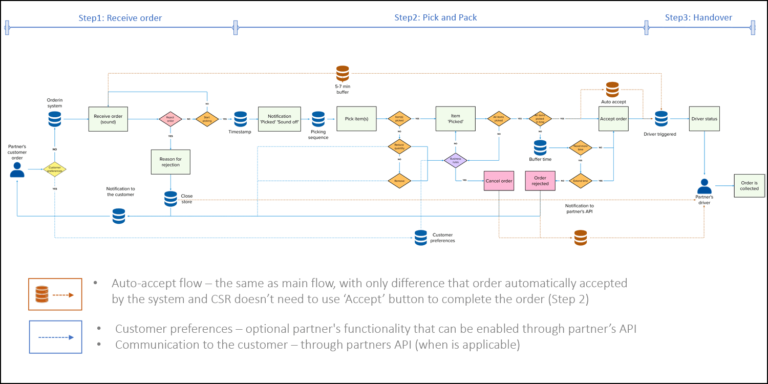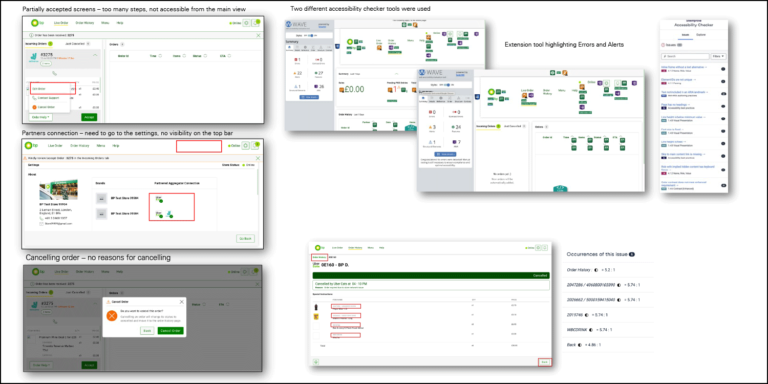BP
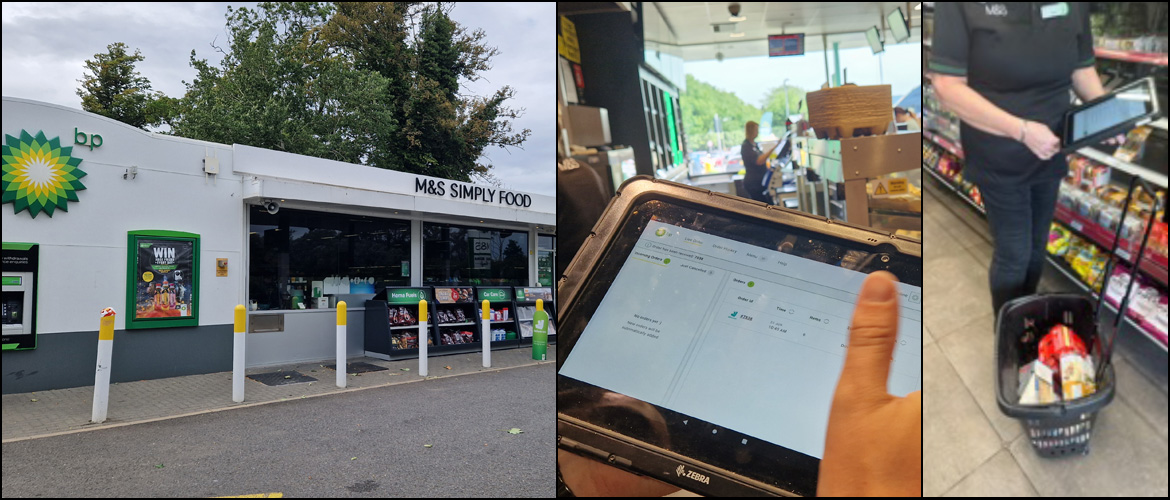
PROJECT INFO
- CLIENT: BP
- DATE RELEASED: 2023
- MY ROLE: Service Designer | Product Designer | UX Lead
- TAGS: convenience sector, enterprise platform, home delivery, product design, SaaS, B2B, B2C, productivity tools
Overview
Home Delivery is a service that emerged from the collaboration between M&S Food and BP petrol stations. The convenience sector continues to grow, fuelled by changing consumer demands — shopping little and more often, topping up at convenience stores, and the growing trend for delivered food. The partnership with Deliveroo and UberEats became a core aspect of the Home Delivery online initiative. During the lockdown, customers were purchasing 20% more at BP forecourt stores.
My Role
As the Lead Service and UX Designer my role was to lead the research, collaborate with stakeholders, and design a service that improved both operational efficiency and user experience.
PROJECTS
Home Delivery Optimisation
Overview
In 2021, BP introduced the OrderIn digital platform, enabling BP M&S store operators to receive and process orders from Deliveroo, UberEats, and other delivery partners. However, the transition to the new digital platform increased the Auto-Rejection rate. The business required identifying the main reasons for auto-rejections and finding a solution to reduce the auto-rejection rate from 5% to 1% or less.
Project objective
The primary goal of this project was to enhance the order flow and reduce the auto-rejection rate from 5% to 1% or less. The challenge was to determine whether this was a site operations issue or a technical problem and design a solution that addressed both aspects.
Discovery
First I’ve looked at current and historic data from regional managers reports, auto-rejection data logs from Deliveroo and UberEats, incident tickets reports form third party technical support team. That exercise helped to create a few hypotheses underlining the fact that either human factor or technology or both contributing to auto-rejection problem.
To validate these hypotheses, I’ve identified 12 bp sites with high and low auto-rejection rates. Comparing these sites would give better understanding of the factors behind auto-rejection – whether it is site operations issue or tech support. I’ve conducted on-sites visits, observing pain points and challenges faced by store operators, conducted interviews with site managers collecting qualitative data on their experiences with the current Orderin digital platform. In addition, I created and sent survey to gather feedback from the rest of 250 stores.
Field study (onsite observations and interviews)
The outcome from discovery phase qualitative and quantitative research pointed out to the fact that technology is the main contributor to auto-rejection rate. Firstly, users were not aware of incoming orders due to internet connections issues, and secondly UI provided poor support for managing store availability for Home Delivery orders, when store operators needed to ‘pause’ Home Delivery.
Research summary
In order to illustrate and communicate the factors that led to auto-rejection I’ve created customer experience service blueprint. that helped understand users’ goals and motivations even before they engage with the user interface, and identify any gaps and shortcomings whether UI provides enough information to complete the task and whether system and underline processes have capacity to support users’ actions and expectations.
The blueprint included various services and roles such as Receive Order, Process Order, Manage stock, Manage refunds and disputes, Technical support, Manage performance, including roles: store’s managers and operators, reginal managers, partners, tech support team, ISS team, trading team.
Current state blueprint
Ideation
Through iterative discussions and ideation, we discovered that the most viable solution would be an automated system that monitored connectivity in real time. When a breakdown occurred, the system would pause home delivery operations for the affected shop and mark it as unavailable for orders until the issue was resolved. This solution delivered immediate impact by minimizing disruptions, significantly reducing auto-rejections, and ensuring a smoother customer experience.
Stakeholders workshops
After series of stakeholder’s workshops, I helped product team to identify and prioritise the following steps:
- First to tackle the problem with Internet connection, by implementing automated monitoring system that would recognise glitches in internet connection and automatically make these sites ‘unavailable’ for Deliveroo and UberEats customers.
- Then create updated order flow that will incorporate technical and UX enhancements.
- End finally optimize current UI solution to be mobile-first responsive design.
Outputs and deliverables
To ensure a structured rollout, I developed a prioritisation matrix using the Effort/Impact methodology to define the MVP scope. This roadmap focused on:
Implementing real-time network monitoring tools.
Reducing SLA resolution times for connectivity issues.
Enhancing order processing workflows to reduce dependency on unstable network connections.
Enhanced order flow
Assessing the existing UI of the OrderIn digital platform to identify shortcomings contributing to auto-rejections.
UX/UI assessment
To ensure the solutions were feasible, I created an interactive prototype using Sketch and facilitated usability testing with store operators. Their feedback confirmed that providing better network visibility and automated support mechanisms would significantly reduce auto-rejections.
Optimised OrderIn prototype
Outcome
Implementing first phase of the project resulted in immediate reduction of the auto-rejection rate to 2% or less.
This project underlined the importance of holistic service design – where operational challenges are just as critical as digital experience enhancements. By observing real-world operations, conducting interviews, and leveraging technical data, I was able to pinpoint an issue that had previously been misdiagnosed as a software limitation.
Key takeaways from this experience:
Field study research reveals hidden challenges – observing store operations and talking to staff uncovered connectivity issues that data alone wouldn’t have surfaced.
Service mapping is a powerful tool – by integrating findings from multiple sources, I was able to highlight how a technical issue had a direct operational impact.
Collaboration drives better solutions – working closely with store operators, technical teams, and designers ensured that the proposed solutions were both practical and impactful.
Automation can resolve systemic inefficiencies – real-time monitoring and automated service pausing drastically improved order management and reduced disruptions –
